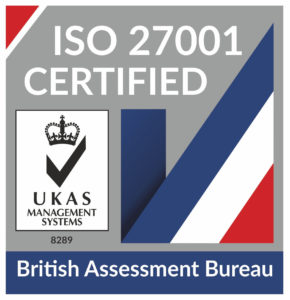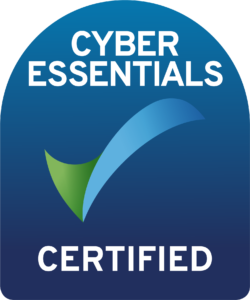
HaloITSM Guides
Documentation to assist with the setup and configuration of the HaloITSM platform
Exact Online Integration
Connecting Exact Online
First, ensure you have the exact online module enabled, this is found under configuration > integrations. Enabled by selecting the + icon on the module.
Fig 1. Enable module
Now head into your App Centre within Exact Online (you will need to be logged in). Select 'manage my apps' and register a new app. Note that the person registering the app must have a partner role in Exact, otherwise they will not have appropriate permissions to create the application.
Fig 2. App centre in Exact Online
When registering a new app you will need to enter a name for the app, call this something sensible like 'Halo connection', you will also be prompted for a redirect URI. To get the URI head back into Halo, open the Exact Online configuration > Exact Online companies > New. On this page you will see the redirect URI needed (see figure 3).
Fig 3. Redirect URI
Copy and paste this into the app registration in Exact, this should look as shown in figure 4.
Fig 4. Exact Online app registration
Hit register and you will be given a Client ID and secret. Copy and Paste these fields from Exact into Halo (see figures 5 and 6). If you have multiple Exact companies you would like to connect make a note of this client ID and secret as you will need them later on.
Fig 5. App details in Exact
Fig 6. App details in Halo
Now select your location and hit 'Connect Now'.
Note, you can only use the generated client ID and secret for one Halo instance, if you have multiple Halo instance you need to connect to Exact, you will need to register an additional app (one app registration per instance).
Importing and Syncing Entities from Exact Online
Now you are connected the other tabs of the integration configuration page in Halo will be available.
Under the 'Company' tab choose which Exact company you would like to import and sync details from.
Tax Rates
Under the 'Tax Rates' tab you can import the tax rates you have in Exact online. This will create each tax rate in your halo, under configuration > billing > tax rate. When importing a tax rate for the first time, Halo Service Desk will check to see if a tax rate already exists with the same name or the same Exact Online code. If found, the existing tax rate will be updated. It is important to note importing tax rates from Exact Online will remove any tax rates not in use by an Exact Online Company from Halo Service Desk. If you create any new tax rates in your Halo, these will need to be mapped to a tax rate from Exact Online in order to sync over.
To map an existing tax rate to one in Exact edit the tax rate settings and choose the Exact company and the associated tax rate. Once set, if this tax rate is used and the invoice synced to Exact the tax settings from the Exact tax rate will be used.
Fig 7. Mapping Halo tax rate to Exact tax rate
Account codes
Under the 'Accounts' tab you can import your accounts codes from Exact. When importing an account for the first time, Halo will check to see if an account already exists with the same name or code. If found, the existing account will be updated. Once imported you can set these to be the default accounts for income and expense accounts on product groups.
Customers
Under the 'Customers' tab you can import and/or map customers from Exact. If your customers already exist in Halo, you will need to complete the mapping table to map the Exact customer to the Halo customer. To do this, edit the page, select 'add' on the table, choose the Exact customer and halo customer to map together.
Fig 8. Customer mapping
When importing customers from Exact Halo will check to see if a customer already exists with the same name or accounts code, if a match is found this existing customer will be updated rather than a new one created. It is advised to complete the mappings table even if your customers have matching names/account codes as they must be identical to match and completing the mappings prevents any potential mis-matches.
You can also choose a top level for these customers to be under, using the 'Top level for customers' setting.
Once the mappings are complete you can import your customers, when importing a preview screen will appear, showing all your customers in Exact. Ensure they are all selected and hit 'start'. Note that if a customer is imported without a mapping, and they do not have a name/accounts code that matches an existing customer, then a new customer will be created in Halo and the mapping will be automatically added to the table.
Fig 9. Customer Import
If customers are created from the import, a new site for the customer will be created using the address in Exact as the site address. If mapping an Exact customer to a Halo customer then the Halo site’s main address will be replaced with the customer’s address from Exact online. If the address of the main site in Halo is different to the customer address in Exact, you will need to create a new site under this customer in Halo and set this as the main site for the customer. This site will then take the address of the Exact customer. This is because the main site of the customer will always populate with the Exact customer address, so you need the current main site to have a different address to the Exact customer address, the main site will need to be replaced with a site that can have the Exact customer address.
If you have a customer that exists in Halo, but does not yet exist in Exact you can create them in Exact from Halo. To do this open up the customer profile in Halo, go to the billing tab set the 'Exact Online company' field. You will also need to set the 'customer ID for accounting integration' field, this needs to be a unique numerical value for the customer. The customer will be created in Exact upon saving.
Fig 10. Exact Online company against customer
Products
Under the 'Products' tab you can import items from Exact and map the item group to a product group in Halo. To create the item group mappings, edit the page and add a mapping to the table. When creating the mapping select an item group from Exact and the corresponding product group in Halo. This will ensure that when importing items from Exact they are imported under the selected product group in Halo.
Fig 11. Product group mappings
You will also need to set a default product group for imported items. Any imported items that have an item group that is not mapped to a Halo product group, will be created under this default product group.
Fig 12. Default product group field
Once you have completed your mappings you can hit 'Import products' this will bring up an import preview screen. Ensure all your products are selected and hit 'start'.
Products imported from Exact will automatically be assigned to the Exact online company they were imported from. If the item in Exact has a revenue (income) and costs (expense) account set against it, this will automatically populate the income and expense account on the product in Halo.
If you have a product that exists in Halo, but does not yet exist in Exact you can create them in Exact from Halo. To do this head to Products > select the product > billing tab, in here you need to set the 'Exact Online' company and the 'product ID for accounting integration'. The product ID must be unique otherwise it will not sync correctly, you can make use of the 'generate' button here. This will check the existing product IDs in the system and generate a unique one for you. Once save the product will create in Exact.
Fig 13. Product fields required for Exact sync
Entities to sync
Under the 'Syncing to Exact Online' tab, you can set which entities you would like to sync. You can choose from customers, products and invoices.
Fig 14. Syncing to Exact Online tab
You can also enable messages for each successful sync, this is useful to confirm the sync has taken place.
Outbound requests
The 'Outbound' requests tab allows you to see all the outgoing requests to from halo to Exact Online. A sync will take place each time a customer/product/invoice is created or edited in Halo.
Once this setup is complete, save the page. head back to configuration > integrations > Exact Online, and set the default tenant for new customers, products and suppliers. This ensures any new customers/products/suppliers that are created in Halo are assigned to this Exact Online company by default. But this can still be changed to another company manually on the customers/products/suppliers.
Connect Multiple Exact Companies
If you have multiple companies within your Exact online account that you would like to sync you will need to head to configuration > integrations > Exact Online > Exact Online companies > new, and create a new company connection.
Fig 15. New Exact Online Connection
Once you have opened a new connection you can connect to your Exact account using the client ID and secret generated earlier. Once connected, ensure you select the different company you would like to sync with (in the 'company' tab) then repeat the previous steps in this guide to complete the setup for this company. This process is repeated for each company you have in Exact, just ensure for each connection you are selecting the correct Exact company.
Additional Details
The Halo to Exact connection is 1-1 so only one Halo entity can be linked to one exact entity (one Halo customer to one Exact customer for example). If a halo customer is linked to multiple exact customers in different companies the Halo customer will be updated with data from these Exact customers in sequence so only the data from the Exact customer that was last synced will remain on the Halo customer. For this reason ensure mappings have a 1-1 relationship.
Common Errors
| Resolution | Error Message |
This indicates the item on the invoice cannot be synced to Exact. Check item has the Exact company set and has a product ID. Also check the product ID against the product is unique. | |
| This indicates the authorisation token for the integration has expired. This can be resolved by disconnecting and reconnecting to Exact on the Integration details page in Halo. |
Popular Guides
- Asset Import - CSV/XLS/Spreadsheet Method
- Call Management in Halo
- Creating a New Application for API Connections
- Creating Agents and Editing Agent Details
- Departments and Teams
- Halo Integrator
- Importing Data
- Multiple New Portals with different branding for one customer [Hosted]
- NHServer Deprecation User Guide
- Organisation Basics
- Organising Teams of Agents
- Step-by-Step Configuration Walk Through



